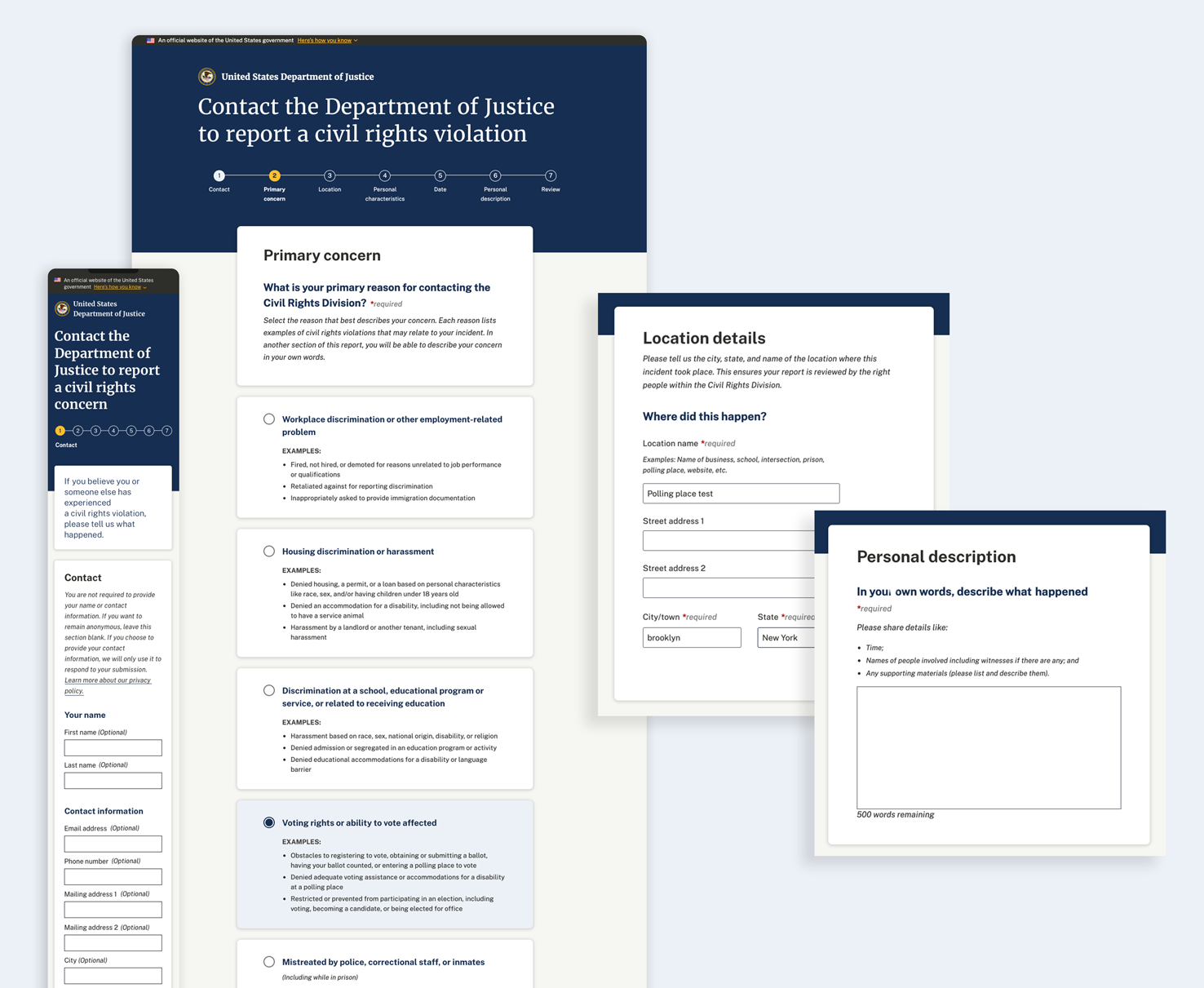Department of Justice
Transform the process for civil rights complaints

Project details
The Civil Rights Division (CRT) within the Department of Justice upholds the civil rights of all people in the United States. It enforces federal laws that protect people from discrimination based on race, color, national origin, disability status, sex, religion, familial status, or loss of other constitutional rights.
The public reports possible civil rights violations to CRT each year. Filing was a confusing and inconsistent process, with more than 30 ways to report a complaint.
CRT received reports by web, email, phone, fax, and physical letter. Most had missing or incomplete information. Staff spent most of their time processing unactionable complaints instead of supporting victims.
Approach
- The CRT partnered with 18F to streamline the complaint submission process to provide a more unified and straightforward experience for victims of civil rights violations.
- Together, we crafted design principles for each part of this new experience against which all designs, prototypes, and builds would be tested.
Outcomes
- The new Civil Rights Reporting Portal transformed the way CRT collects, routes, tracks, and responds to civil rights complaints. It includes:
- A redesigned civilrights.justice.gov. This site explains in clear language the scope of civil rights enforced by CRT, examples of violations, and the complaints process.
- A complaint intake form. The new form has a progress tracker and clear instructions. The form design ensures more complete submissions.
- Back-end ticketing and tracking system. We designed and built a system to easily route and track complaints through the investigation process. CRT staff have clear visibility into all open complaints. They can review, sort, and route complaints to the right team for investigation.
- While the investigation process can be complex, complaints no longer languish in the unknown. Members of the public can submit complaints and know what to expect next.
- CRT staff no longer have to spend hours per week chasing missing information and routing complaints. They can devote more time to helping victims.
- The portal is a single source of data about civil rights complaints and has become a powerful tool for spotting trends and patterns.
“
Working with 18F and TTS really helped us identify some gaps and infrastructural needs in our organization.
Related blog posts
-
Content design for beta.ada.gov: writing for action and flexibility
We worked with a team at the Department of Justice to redesign ADA.gov. We helped them launch beta.ada.gov, and we’ve designed new content for some of the most sought-after ADA topics. -
Building product management capacity in government part 3: A day in the life of a new product owner
This is part four in a series of posts about building product management capacity in government agencies. For this post, we chatted with Bill Laughman from DOJ’s Civil Rights Division about his experience as a product owner on Civil Rights reporting portal. -
Transforming how DOJ's Civil Rights Division engages with the public
In order to be more responsive to the public’s changing communication needs and the increased reporting volume,the Civil Rights Division, in close collaboration with 18F, has launched a user-friendly online submission experience at civilrights.justice.gov that transforms the way the Division collects, sorts, and responds to civil rights reports.

